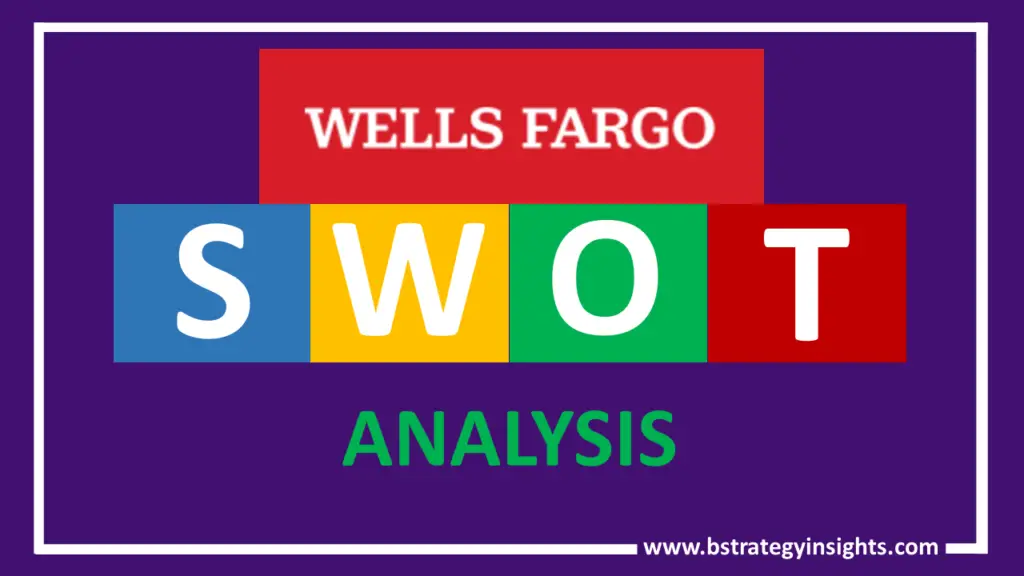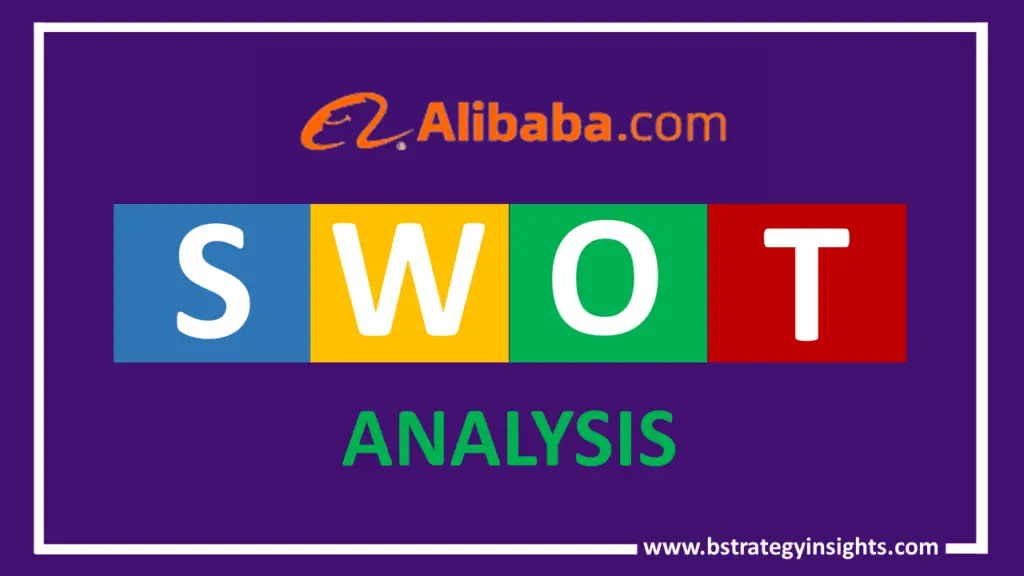
Wells Fargo has, over the decades, taken a key position in financial institutions around the world, taking center stage in various types of banking, including online services, corporate banking, commercial banking, and community banking.
Wells Fargo – At a Glance
| Name | Wells Fargo |
| Website | https://www.wellsfargo.com/ |
| Founders | Henry Wells, William Fargo |
| Chief Executive Officer (C.E.O.) | Charles W. Scharf |
| Headquarters | San Francisco, California, United States |
| Year Founded | 1852 |
| Type of company | Public |
| Revenues (FY 2021) | $78.4 billion |
| Key Products/Services | Banking, retirement plans, merchant services, rewards and benefits, online banking services, credit facilities, loans |
| Key Competitors | HSBC, UBS, U.S. Bank, Morgan Stanley, Citibank, Bank of America, JPMorgan Chase |
Wells Fargo’s Strengths
Huge financial base
Wells Fargo, 4th largest bank in the US with a capital base of $1.71 trillion, has dropped from being the third largest bank in the US. This huge financial capacity secures the firm’s ability to serve a diverse and numerous client base seeking to secure loans, a critical advantage in the banking sector. Additionally, a huge financial base is critical in financing a bank’s growth agenda and ensuring the bank has the capacity to take advantage of every worthy arising opportunity for growth and expansion. After a sudden decline in its financial capacity during the COVID period, the bank was able to bounce back and significantly increased its profits from $3.3 billion in 2020 to $21.5 Billion in 2021 and a slight 0.34% decline in profitability for the year ending September 2022.
Part of the top 4 largest US bank
Wells Fargo has been part of the 4 largest banks in the US. This gives the top four monopolistic advantages. For instance, these big four are able to influence policies in the banking industry to their advantage. The other banks include JPMorgan Chase & Co., Bank of America, and Citi Group.
Industry Expertise; Number 1 brand for middle-market banking
Wells Fargo is re-known for being the best commercial bank serving the middle market, a segment that is approximately worth $10 trillion. This is approximately a third of the US economy. To serve this segment, a bank needs great expertise. Wells Fargo offers experienced lending and relationship managers to work with the middle market. It offers credit, loans, real estate financing, and cash financing. The brand has vast market experience with regard to retail and consumer industries, beverage, auto dealerships, education, government, food and agribusiness, healthcare, technology, real estate, hotels, and restaurants, among others. It has more than 130 offices nationwide for middle market banking to ensure efficiency and effectiveness in serving of this segment.
Strong brand recognition
Wells Fargo is highly recognized among consumers in the US and global markets. The brand is recognized by Brand Finance’s 2022 report to be the 8th most valuable global brand, and it is position 41 on the world’s largest brands. The brand recently earned the ‘outstanding’ rating for community lending. Because of the strong brand recognition and brand familiarity, customers are more likely to buy Wells Fargo’s products and services when compared to competitors with minimal brand recognition. This strong recognition enables the brand to easily introduce its new products and services. Strong brand recognition enables Wells Fargo enjoy network effects.
Well-differentiated products and services
Wells Fargo has well-differentiated, segment-specific products and services that serve the entire market. Its products include loans, banking, merchant services, investing, and online banking services, among others.
Proper segmentation
In a bid to offer highly personalized products, the bank has ensured proper market segmentation. The first of its segments is consumer banking and lending, which serves consumers and small businesses. This is Wells Fargo’s largest segment, generating about 44% of its revenue. Products in this segment include credit cards, auto loans, and home lending, among others. Other segments include commercial banking, Wealth and investment management, and corporate reconciliations, among others.
Wells Fargo’s Weaknesses
Lawsuits, Fines, and Scandals
Wells Fargo has been embroiled in numerous scandals, lawsuits, and fines that have cost the brand both its image and financially. For instance, the bank’s employees are alleged to have opened millions of fake accounts without customers’ consent in a bid to meet their sales quotas. The bank was fined $3B. The brand has faced other lawsuits for loan underwriting, forced place insurance, excessive overdraft fees, violation of New York credit card laws, discriminatory hiring processes, tax liability, pushing customers towards more expensive retirement plans, alteration of documents, and failure to monitor suspect money laundering, among others.
Legacy systems
The bank has been in existence for more than 150 years. Its systems have aged and become less efficient. This has increased the brand’s cost for repair and maintenance as the systems break down more often and make it harder to satisfy regulators.
High opportunity cost
Wells Fargo’s fake account scandals resulted in the Federal Reserve capping the number of loans that Wells Fargo could give out. The bank quickly reached its capping.
Wells Fargo’s Opportunities
Expansion into emerging economies
The bank has great opportunities for expansion into emerging markets and economies like Africa and Asia. While the bank has operations in more than 40 countries, more than 95% of the bank’s assets are in the US. The bank has greater opportunities to invest more in other markets that the bank has not yet explored that are ripe for exploration.
Innovation
Innovation is the key to longevity in the market. Wells Fargo has great opportunities to innovate new products that provide critical solutions to customers. This will create more revenue streams for the brand.
Research and development
There is great potential in continuously researching customers’ needs, preferences, and the different paradigm shifts in the market that appeal to the customer. The customer is continuously evolving, and therefore a keen eye on the changing trends will definitely inform Wells Fargo’s personalization agenda. This is key to customer satisfaction, diversification, and segmentation.
Wells Fargo’s Threats
Global recession
The globe has been hit by numerous catastrophes and calamities like the recent Corona Virus and the rise in fuel prices. The Corona pandemic, for instance, caused an 89% drop in Wells Fargo’s profits after the collapse of many small businesses and loss of jobs; this led to a massive increase in unpaid loans. All this has adversely affected economies and wiped off millions of jobs. This could lead to customers defaulting on their loans. The bank could be adversely affected if the number of defaulted loans is significant.
Law suits and fines
The bank faces the threat of lawsuits and fines that not only demand compensation in huge amounts but also tarnish the brand’s image in the public domain. If the damage is substantial, it could affect the going concern of the business.
New technologies
New technologies are defining new advantages for businesses in the market. For Wells Fargo, new technologies replacing legacy systems could increase efficiencies and reduce costs of operation.
Conclusion
Wells Fargo is a hugely admirable brand in the financial industry. This gives it a great competitive advantage in the market. The bank, however, needs to significantly reduce any occurrences that could lead to lawsuits, penalties, and scandals. It needs to continuously invest in new technologies to replace legacy systems and continuously innovate to elongate the brand product’s life cycle.



